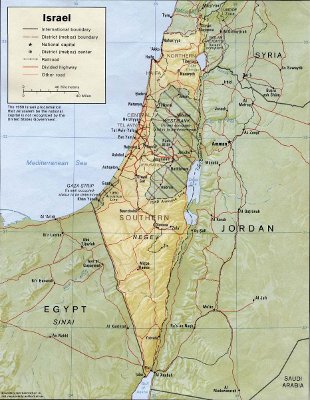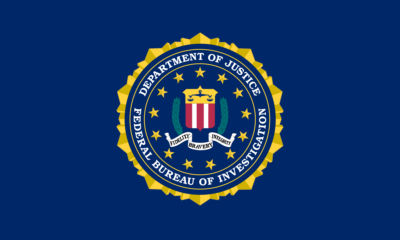Guest Columns
International treaties for Jewish rights

Listed below are international treaties whose whole purpose was (1) the creation of Palestine as a national homeland for the Jewish people worldwide, and (2) recognizing their historical ties to this land. Since this purpose of these treaties was summed up in only one sentence, and since there were no other sentences describing the missions or prime objectives of these treaties, it must be clearly understood that every sentence in the treaties is related to the implementation of this objective.
This being the case, why is it so difficult for the World, the US, the UN and its members, France, Italy, Japan and Britain (who sat on the League of Nations Supreme Council and drafted these treaties and redrew the borders of the Middle East) to understand the letter and the intent of the San Remo Conference decision? Even though Britain, the mother of the English language, did a series of political acrobatics to give a distorted meaning to the Mandate entrusted to it.
Origins of those international treaties
Article 2 of the British Mandate provided that the mandatory, Britain, would take all the necessary measures to implement the terms of the preamble; to reconstitute Palestine as a national homeland for the Jewish people worldwide and recognize their historical rights to the land.
From an international law perspective, the only existing binding international treaties … which determine the borders of the Middle East, ruled that Palestine would be reconstituted as “a National Homeland for the Jewish People World Wide” and that the treaty and the World would recognize the Jewish Historical Connection to Palestine;
If there were any historical connection for Arabs to Palestine, the Supreme Council of San Remo Conference, who had the powers of disposition, and the League of Nations, who adjudicated the case after extensive representations by the Arabs, chose to ignore these purported connections and decided in a form of a binding international Sacred Treaty to grant them to the Jewish People only.
Whereas recognition has thereby been given to the historical connection of the Jewish people with Palestine and to the grounds, for reconstituting their national home in that country.
San Remo and the Palestine Mandate
It was approved in the San Remo Supreme Council decision in the form of “a Binding International Treaty” in 1920. After the fall of the Ottoman Empire, the Supreme Council was convened and empowered with redrawing the map of the Middle East by the great powers. Their decision was enshrined in a form of international treaty in 1920, in the Palestine Mandate, in 1922, and the British American convention in 1924.
These treaties were approved and ratified by the League of Nations, its 51 members and, by extension, the World and three different US Presidents, their respective Congresses, the British King, and parliament, France, Italy, and Japan. The UN approved the League of Nation’s position. Once it was approved, Britain, the “Mandatory,” the League, and the UN had no right to vary the terms of these treaties. They thus became Res Judicata (a closed matter).
Around 1882, according to encyclopedia Britannica, and the Turkish Census and Vital Cuinette, a French Geographer, there were only approximately 142,000 Arabs in Israel, many of which came during the Egyptian occupation around 1830. They came from Algiers, Syria, Bosnia, Libya, Afghanistan, Egypt, and from as many as 20 countries, and spoke in 20 different dialects. Today the Arabs swear that they have lived there from time immemorial!
Both their Excellencies, the Emir Feisal and Abdullah approved the League of Nations decisions. At different points in history, Emir Feisal, in an agreement with Weitzman, agreed to support the Zionist claim on both sides of the Jordan river, and later Abdullah, agreed with Churchill to support the Zionist claim to the territory from the Jordan river to the Mediterranean, including Judea and Samaria and Gaza;
Recognition Of Historical Ties Of The Jewish People To The Land
If historical ownership was an imperative determining factor, which it was, then the World, the League of Nations and the UN must be consistent and follow the historical map of Israel. Historically Israel sat on both sides of the Jordan River;
The Supreme Council of San Remo refused to draw the final borders of Palestine until Emir Feisal approved them (from the minutes of the San Remo conference).
The San Remo Decision provided “That no part of Palestine would be ceded or leased to foreign powers.” The ceding of the Golan to Syria in 1923 and ceding Trans Jordan were clear violations of this injunction;
The Partition Plan only demarcated the cease fire lines. It had no binding legal force;
It was not approved by the Arabs. In order for the green lines to have any sort of significance, that approval would have been necessary at the very least;
The UN General Assembly has no power to change borders. Therefore its decision or advice was insignificant from a legal perspective.
The UN has no power to vary an existing valid international treaty which the League of Nations, its predecessor, approved (Res Judicata) and had inherited from the League of Nations (granting Israel the lands between the Mediterranean to the Jordan River)
The UN has no power to draw new agreements which run contrary to existing Valid International Agreements or Treaties which it had inherited from its predecessor, the League of Nations.
No borders decided by the San Remo Conference and approved by the League of Nations, save those of Israel were ever challenged or changed;
Appendix xxii, p. 951, Jacques Gauthier
The Convention of 1924
Text of convention between the United States of America and Great Britain re Palestine – Dec. 3. 1924:
Whereas the Principal Allied powers have also agreed that the mandatory should be responsible for putting into affect the declaration originally made by the government of his Britannic majesty and adopted by the said powers in favor of the establishment in Palestine of a National Home for the Jewish people—
Whereas recognition has thereby been given to the historical connection of the Jewish people with Palestine and to the grounds for reconstituting their National home in that country
Article 1: Subject to the provision of the present convention the United States consents to the administration of Palestine by his Britannic Majesty, pursuant to the mandate recited above.
Britain may not cede land to foreign powers, because doing so runs contrary to The Balfour Declaration Preamble in the Mandate and the San Remo Treaty.
According to international law, the Jews, Worldwide, no matter where they live in the world, are considered “Virtual Inhabitants of Palestine.”- J. Gautier
The UN sets a precedent
● There was a UN ruling which stated that the rights derived from the Mandate, the San Remo Decision or the League of Nations approval, granting Israel rights to its borders from the Jordan river to the Mediterranean Sea, did not expire or disappear as a result of the expiration of the League. – J. Gauthier
● Article 2 of the Mandate: The Mandatory would take all the necessary measures to implement the terms of the Preamble; to reconstitute Palestine as a National Homeland for the Jewish People worldwide and recognize their historical rights to the land.
● Article 20 – no Israel’s right to Palestine would be diminished in any way as a result of the UN inheritance of the Leagues position. – J. Gauthier
● Civil and political right to Jews. but Only civil rights to other inhabitants.
This had never happened before in history. No such recognition had ever been accorded to anyone, ever. Palestine was to be held for the Jewish people wherever they lived. Presumably, Britain ceded that land to comply with the spirit of reconstituting Palestine as a national homeland for the Jewish people.
This treaty which was concluded by the principal powers, in affect, as representative of the League of Nations, is binding on the League, particularly after it approved it. The League cannot therefore change the mandate provisions. (Nor, of course, does the Mandatory have that right) (*1651 pg 404) Gauthier
Mandate for Palestine
The Mandate for Palestine conferred on Britain by the Principal Allied Powers and confirmed by the League of Nations on July 24, 1922:
Article 5. “The Mandatory shall be responsible for seeing that no Palestine territory shall be ceded or leased to, or in any way placed under the control of the Government of any foreign Power.”
The resolution of the League of Nations creating the Palestine Mandate, included the following significant recital:
Whereas recognition has thereby been given to the historical connection of the Jewish people with Palestine and to the grounds for reconstituting their national home in that country [which obviously includes Judea and Samaria misleadingly called ”the West Bank”].
A Mandate for the Jews
The San Remo Decision made on 25 April, 1920, incorporated the Balfour Declaration of 1917 and Article 22 of the Covenant of the League of Nations. It was the basic decision upon which the Mandate for Palestine was constructed. While the decision made at San Remo created the Palestine Mandate de-facto, the Mandate document signed by Great Britain as the Mandatory and the League of Nations made it de-jure. It thus became a binding treaty in international law. It provided, inter alia, the following:
ART. 2. The Mandatory shall be responsible for placing the country under such political, administrative and economic conditions as will secure the establishment of the Jewish national home, as laid down in the preamble, and the development of self-governing institutions, and also for safeguarding the civil and religious rights of all the inhabitants of Palestine, irrespective of race and religion.
ART. 6. The Administration of Palestine, while ensuring that the rights and position of other sections of the population are not prejudiced, shall facilitate Jewish immigration under suitable conditions and shall encourage, in co-operation with the Jewish agency referred to in Article 4, close settlement by Jews on the land, including State lands and waste lands not required for public purposes.
-

 Executive19 hours ago
Executive19 hours agoFBI Raided Secret Service Agent’s Home in Tax Fraud Probe
-

 Civilization5 days ago
Civilization5 days agoEqual but Separate: How the Gender Divide Is Rewiring America
-

 Executive4 days ago
Executive4 days agoTrump Ditches ‘The Weave,’ Delivers Sales Pitch Susie Wiles Asked For
-

 Executive4 days ago
Executive4 days agoJudge Green-Lights Secret Service Agent’s Retaliation Case
-

 Executive3 days ago
Executive3 days agoWaste of the Day: Outlays Per Person Up Nearly 100X Since 1916
-

 Civilization5 days ago
Civilization5 days agoJimmy Lai’s Family Looks to Trump, World Leaders
-

 Christianity Today3 days ago
Christianity Today3 days agoYou Must Know His Voice – Powerful Video
-

 Guest Columns3 days ago
Guest Columns3 days agoBlood on the Sand: Australian Massacre Exposes Hollow Core of Anti-Zionism









